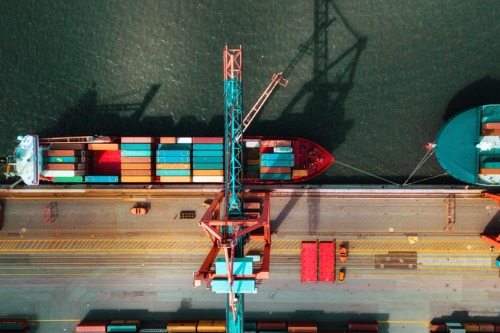

More than $7 trillion (approx. £4.94 trillion) of trade risk is concentrated in the world’s 50 busiest ports. This is a worrying finding of a new white paper from Russell Group on ‘Why Understanding Global Trade is Key to Modelling Rising Port Accumulation’. Discussing the key findings of the report at a Press briefing, Russell Group’s founder and MD Suki Basi highlighted the essential role that transportation plays in relation to the world’s economy.
“[Between] the year 2019 and 2020, global trade has dropped by 15%, which is essentially a $2.9 trillion drop in one calendar year,” he said. “And this is quite an interesting statistic in the sense that this is the first drop after a 10-year bull run from the credit crunch. Between the credit crunch of 2008, and the pandemic, which emanated in 2020, we’ve seen all the positives written off in one year - but even this one year has shown some interesting dynamics between the ‘new world’ and the ‘old world’.”
Looking at the global trade dynamics of this period, Basi highlighted how integrated circuit boards were the biggest gainer while trade in crude oil dropped by around $1 trillion. What this shows, he said, is that continuous monitoring is key. It’s essential not just for insurers running portfolios but also for those companies increasingly running portfolios of portfolios.
The fact that 55% of global trade risk (or $7.5 trillion) is locked up in 50 key ports, shows that trade is increasingly connected, he said, which has ramifications for how seriously an incident or blockage at a port can impact organisations, consumers and the wider global economy. To contextualise this, Russell’s report explored five global shipping port scenarios and their connected risks.
These are:
1. Integrated Circuit Boards (ICBs) – analysis from the group has revealed that ICBs are the largest imported commodity into China ($46 billion).
2. Los Angeles – this is one of the world’s largest and most vital ports with an annual export flow of $6 billion and an import flow of $222 billion.
3. Long Beach – this is a crucial port for the US economy with an annual export flow of $77 billion and import flow of $264 billion.
4. Brexit logjam – the whitepaper highlighted that Felixstowe and Southampton experienced severe disruption as the ports struggled to keep up with the COVID-19 induced backlog of trade entering and leaving the ports.
5. Houston, Texas – Russell Group revealed that if this port were destroyed by a hurricane the knock-on effect on the US economy would be devastating for key energy companies as well as retail economy giants like Walmart.
Any discussion on the interconnectivity of global trade wouldn’t be complete without reference to the Suez channel crisis, but Basi noted that even before this event there were several low-key incidents that illustrated the nature and severity of connected risks. Russell Group valued that particular ship as having commodity values (not retail values or insured values) of just under $90 million, he said, yet on the day of the event itself, there would have been $1.1 billion worth of trade following through the Suez channel.
“So, every week from that period, we were looking at a value of around $10 billion, for every month from the first incident $40 billion and we quantified the annual period to be just under half a trillion dollars,” he said. “But Suez, although it’s important from a movement of goods perspective… isn’t the most valued in terms of trading routes. The biggest two are the Dover Strait, which is feeding not just the UK, but most of Northern Europe, Germany, Holland, etc, and the Strait of Malacca, which is feeding China from the west, and the eastern seaboard.
“So, from our perspective, yes, it was an incident, and it would have interrupted many routes. But the point is that there are other trading routes that would have equally caused, and probably caused more damage than that one.”
